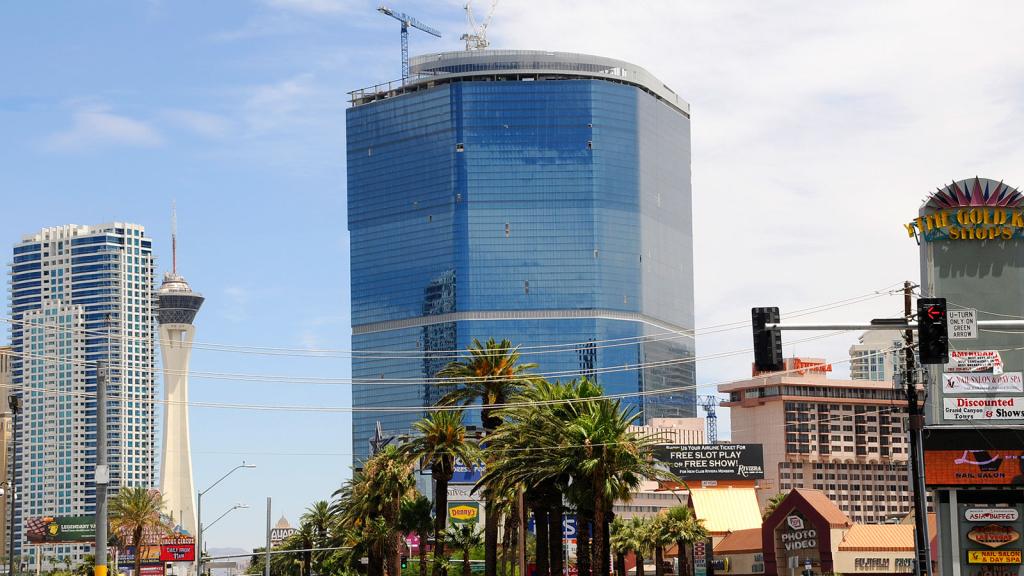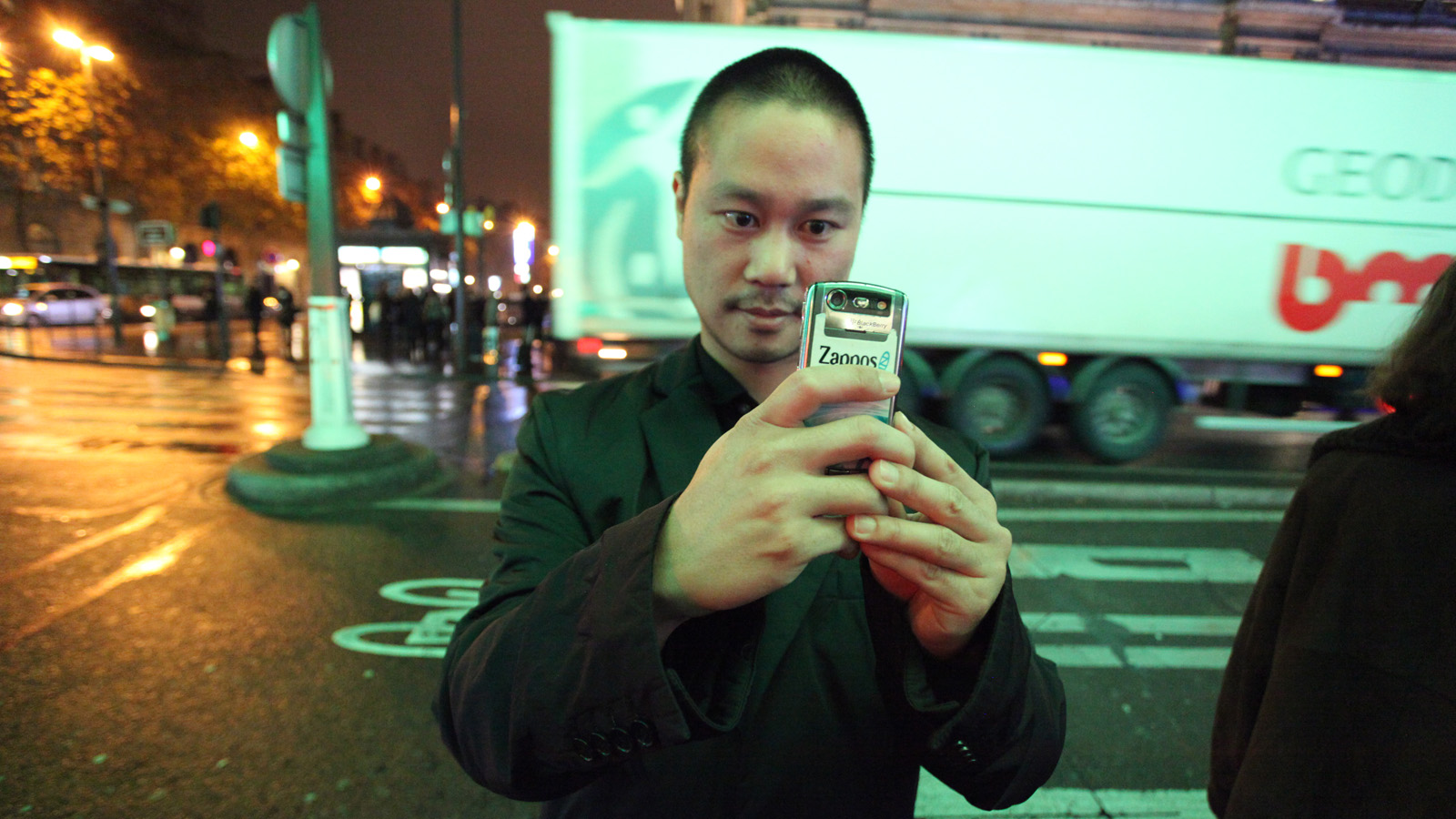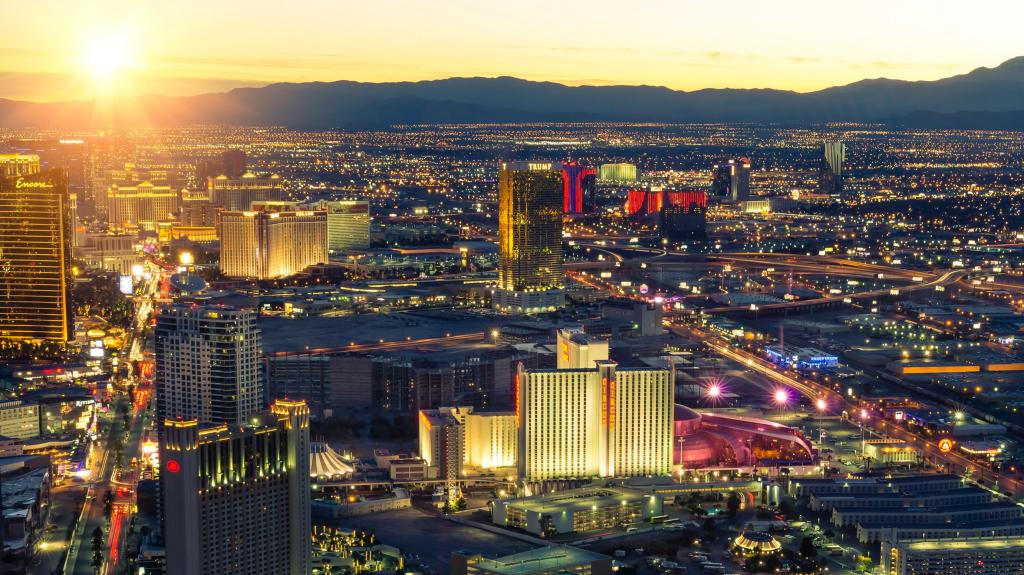So I’m in Tony Hsieh’s apartment in Downtown Las Vegas talking to a woman with rainbow hair whose bona fide, So I’m in Tony Hsieh�
Hsieh, the billionaire CEO of Zappos shoes, apparently has a thing for unicorns. They’re all over the apartment building, called the Ogden, where he and dozens of his associates live. Someone has drawn one (replete with rainbow) on the whiteboard Hsieh and his crew use for brainstorming sessions. There’s even a life-size (OK, horse-size) black unicorn lamp in one of the Ogden’s resident lounges. It’s past the Alice-in-Wonderland-inspired hall of mirrors and the black spot someone has painted on the wall and labeled, “HOLE INTO ANOTHER UNIVERSE. COME ON IN!”
Welcome to the wild and wacky world of Tony Hsieh’s grand urban experiment. I’m just a visitor here, along for one of the daily tours of the Big Guy’s flat, and getting the full sales job from the Pixie, whose real name is Heidi Noelle Stamper, and who works for the Downtown Project, a development company Hsieh has set up to orchestrate the complete overhaul of this city’s rundown downtown. (Don’t confuse Downtown with the Strip, which sits to the south, outside official city limits.)
The Downtown Project has bought up 60 acres of parking lots, seedy motels, and dusty, vacant land that was cleared to make way for more high rises like this one before the economy went belly up and Vegas went into the ditch. Armed with $350 million of Hsieh’s money and more youthful ebullience than you can believe, the project has set out to turn an urban wasteland into what Stamper calls a “live-work-walk-play-eat space.”
If they succeed, Hsieh and his compatriots will have created a thriving, dare I say sustainable, urban core in a neglected corner of a sprawling desert city. That is, a unicorn.
Skeptical? You have good reason to be. There are a thousand reasons that this experiment should crash and burn. But then, nobody would have believed Hsieh could reinvent the shoe business, either.
Lord knows, this town could use a little reinventing.
“Our economy has been based on gaming and tourism since Bugsy Siegel threw the Flamingo up on Las Vegas Boulevard in the 1940s,” says Tom Skancke, executive director of the Las Vegas Global Economic Alliance, a regional economic development agency. “Here comes 2008 and the global recession. When banks stopped lending money and the global recession hit, our economy went into the tank. People said, ‘Whoa, we cannot rely on just gaming any longer.’
“Look at Detroit,” he adds, with a nod to what fate can befall a great American city. “Detroit was a one-trick pony.”
The Global Alliance has already helped woo companies such as SolarCity to Las Vegas. (Chaired by Tesla Motors founder Elon Musk, the company installs solar panels on residential roofs, then sells the owners the electricity, rather than the panels.) Skancke says his group wants to build new economic sectors on tech, foreign direct investment, and unmanned aerial vehicles (a.k.a drones). Many of the U.S. government drones operating overseas are piloted from the nearby Creech Air Force Base, and the Federal Aviation Administration recently selected Nevada as one of six drone test sites.
There are also efforts underway to capitalize on education, health care, and the lessons Las Vegas has learned (and continues to learn) the hard way about water and living with less of the stuff.
But Hsieh and the Downtown Project have done the most transformative work to date. It all started in 2010 when Zappos bought the old Las Vegas City Hall and moved its HQ there from suburban Henderson, Nev., bringing with it 1,500 “Zapponians,” as they affectionately call themselves. The plans just mushroomed from there.
On a wall in Hsieh’s apartment is a map with the Downtown Project’s 60 acres highlighted in green. His staff calls it the llama map, because the property boundaries vaguely resemble one, and because Hsieh apparently has a special affection for llamas, too. Stamper (a.k.a. the Pixie) runs through the company’s doings on, and plans for, that land, hardly taking a breath, as she walks us through Hsieh’s apartment.
There’s the new elementary school with “a totally revamped curriculum focused on neuroplasticity, social-emotional learning, and entrepreneurialism.” There’s the Container Park, a miniature shopping mall built from shipping containers and guarded by a 40-foot, fire-breathing praying mantis that Hsieh picked up from an artist at Burning Man. There are coworking spaces and a “community wellness center” called Turntable Health that includes a demonstration gym and kitchen. There’s a coffee shop, The Beat, that seems to host business meetups and networking sessions nonstop, day and night. And then there’s Shift, a vehicle “sharing” service that includes bikes, electric golf carts, and 100 Teslas that will be parked around the neighborhood for folks in need of some wheels. (Membership will set you back roughly $400 a month.)
The whole thing is packaged and sold to starry-eyed would-be-entrepreneurs as the best thing since Silicon Valley — better, even, as Vegas is still relatively affordable, and Downtown has Hsieh’s trademark, sunshiny we-can-do-anything shimmer (and many of his millions), plus an air of tribal, new-frontier wildness about it. The signature annual event is a festival called Life Is Beautiful that Stamper describes effusively as “a cross between Coachella, South by Southwest, Iron Chef, TED, and Cirque du Soleil.”
Improbable as it all sounds, people seem to be going for it. During my time poking around downtown a few months back, I met a number of young would-be businesspeople, chatting in the coffee shops, attending gatherings organized by the Downtown Project, walking through Hsieh’s apartment in the Ogden. It was clear that they were really taken by the notion of a new urban Shangri-la in the heart of the Mojave.
Not everything is proceeding according to plan. Businesses began fleeing the Container Park only months after it opened. A robotics startup that provided an early success story for the Downtown Project has decamped for the real Silicon Valley. But a certain amount of failure is built into the business plan.
There does seem to be one gaping hole in the Downtown Project’s vision, however: housing. Just about everyone I talked to during my visit — many of them Hsieh’s employees or the beneficiaries of his largess — expressed dismay over the lack of affordable, and family-suitable, housing. Downtown Las Vegas seems to be missing the “live” portion of the promised “live-work-walk-play-eat space.”
Even the Pixie herself, who compares living in the Ogden to life in a college dorm, acknowledges that housing is “one of our biggest — I don’t want to say concerns — our biggest challenges.”
Hsieh, for his part, is reportedly not interested in building housing. He apparently figures that if he seeds enough businesses, and attracts enough starry-eyed young urbanites, a housing developer will materialize. “It’s a really dastardly and awesome strategy,” says one local observer. “He’s building on about every-other block, and watching the property values rise on the lots in between.”
And at the end of the day, Hsieh is making a shrewd bet. He’s wagering that he can attract enough young people, from a generation that spurns cars, adores dense, urban neighborhoods, and is increasingly priced out of the tech centers on the coast, to turn this dusty wasteland into a thriving urban hub.
If he succeeds, not only will he have created a unicorn, but he will have turned Vegas into a place that really can teach the rest of the world a thing or two about living sustainably in a time when space and resources are hard to come by.



